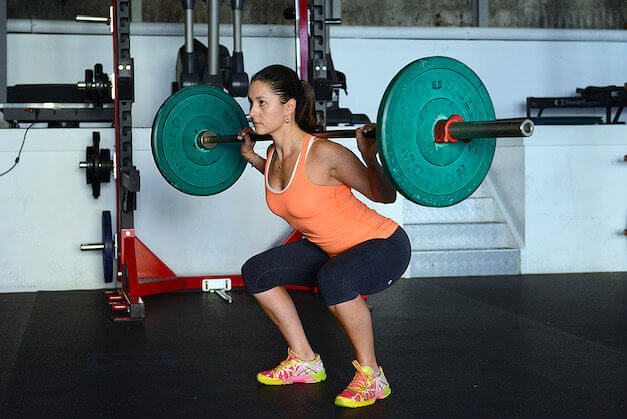Postpartum weight-lifting – is it safe?

I believe women are becoming stronger and fitter than ever before
More and more women are hitting the gym and participating in regular exercise routines. Although there is still an undeniable amount of pressure women feel to aesthetically look a certain way I do believe that there is a shift toward women embracing becoming strong rather than just striving to lose weight – which is awesome.
I do believe that there is a shift toward women embracing becoming strong rather than just striving to lose weight
So, if you are a weight-lifting mum and taking part in postnatal exercise, I thought I’d share some of the key things that would be incredibly helpful for you to be aware of:
1. Intra-abdominal pressure
If you are a weight-lifting postpartum, you need to ensure your pelvic floor is working well. If you can imagine your abdominals, pelvic floor and diaghram as a canister – with your pelvic floor being at the bottom of this canister and the vital muscles ensuring your pelvic organs stay in their correct place within your pelvis – then you may begin to see how important this is.
Whenever you lift weights you will create intra-abdominal pressure and this pressure needs to be maintained. If your pelvic floor or abdominal wall cannot cope with the additional pressure of the weights you are lifting then over time it could further weaken and in worst cases create a prolapse.
Quick Tip: assuming you have seen a Women’s Health Physiotherapist and you know your pelvic floor is functioning well you can do a quick pelvic floor check at the hardest point of your exercise. For example, when you reach the bottom of your squat quickly release and contract your pelvic floor and see if you can feel this movement. For some women under load they will no longer have an awareness of their pelvic floor due to the pressure created. If you don’t have any awareness or feel you are pushing out you might choose a lighter weight that your pelvic floor can cope with.
For your abdominal wall, have a friend place their hand on your abdominals to feel for any doming or bulging that might indicate the pressure is too much for you to maintain.
2. Muscles fatigue over time (and your pelvic floor is a muscle)
Just because your pelvic floor is coping with a specific weight at the beginning of your exercise program or at the start of your sets and reps doesn’t mean it will automatically cope as your reps and sets progress.
Your pelvic floor is a muscle and muscles fatigue over time. Making sure you maintain an awareness and check in at regular times during your session can be incredibly helpful in ensuring your pelvic floor is keeping up with the other parts of your body.
Quick Tip: consider your programming. If you know you want to lift heavier but your pelvic floor fatigues over time you could choose your heavier weights toward the start of your set rather than work up to them (after a proper warm-up of course). Alternatively you could choose a lower rep range i.e 6 sets of 5 reps rather than 3 sets of 10, to allow for more recovery time in between sets and less endurance needed.
3. Always train to the weakest link
All in all if you ensure your pelvic floor and transversus abdominis are functioning well (a trip to your Women’s Health Physio will ensure you completely understand this), I am a huge advocate of strength training and lifting weights as a mum – after all our little people get bigger and heavier and still want to be carried!
BUT, we need to remember to always train to the weakest link.
What this means is that no matter how much weight your legs or glutes may be able to move, if your pelvic floor, abdominal wall or any other part of your body is not coping with the level of intensity then we need to adapt and choose an option that your ‘weakest link’ copes with. It’s about finding that sweet spot of making your whole body stronger rather than overloading and potentially further weakening the weaker bits.
To be guided in your weight lifting as a mum, head to our Find a Trainer page where you can find an accredited and experienced fitness professional in your area that can support you through this part of your motherhood journey.
Mum-focused author, educator and business owner, Jen Dugard is on a mission to ensure every woman is safely and effectively looked after when she becomes a mother. She is a highly qualified trainer and fitness professional educator and has been specialising in working with mums for over a decade. MumSafe is the go-to place online for women to find mum-focused fitness services that are all accredited, experienced and partnered with women’s health physios so you know you are in very safe hands.
